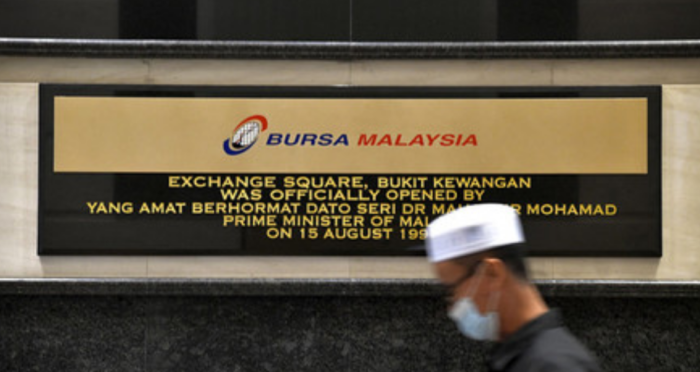By Dr Jeyakumar Devaraj
YESTERDAY evening, one of the residents at my housing estate stopped me as I was taking my evening walk.
“Doctor, is the 5,725 new cases really true, or are they trying to justify the Emergency?” he asked. “Or is it because they want to scare us all into taking the vaccine?” This gentleman, who is in his early seventies, is a retired university lecturer. It is instructive that even the well-educated and well-read have some lingering doubts about COVID-19 and the need for the vaccination programme.
I told him to check with any of his friends who have children, or nieces and nephews, working in any of the Government hospitals in the Klang Valley and ask them how the COVID-19 situation is.
The wards are packed with symptomatic cases, I told him, and the ICU beds are getting filled. The situation is dire and the Government healthcare staff are under tremendous pressure. I assured him that the 5,725 new cases reported is not a propaganda.
But there are some who are still not convinced. These sceptics point to the case fatality rate which is now only 0.36% – meaning that out of every 1,000 people diagnosed with COVID-19 in Malaysia, only three to four of them actually succumb to the infection.
So, they charge that the numbers have been hyped up by the authorities. According to the sceptics, it is not so bad and the lockdowns are unnecessary. But what the sceptics do not take into account is that (at this point in Malaysia) about 14% of those who contract COVID-19 require oxygen therapy and other treatment as well as have to be admitted to a hospital.
This 14% is made up of those who are elderly, have other illnesses like diabetes or heart failure, or, in quite a large number of them, develop an over-reaction of their own immune system – the “cytokine storm”.
We still do not know why this develops, but in these individuals, the immune system goes into overdrive and causes multiple organ damage. The immune over-reaction causes, among other adverse effects, a malfunction of the normal blood clotting mechanism and this leads to clots (thrombi) forming in other organs, impeding their blood supply and causing further damage.
The doctors handling COVID-19 patients now have effective protocols to manage the “cytokine storm”. They give steroids to damp down immune system hyper-reactivity, high doses of oxidants like vitamin C and E, as well as provide oxygen and chest physiotherapy that these patients need (there are other more sophisticated treatment options such as monoclonal antibodies, but it is quite expensive and not routinely given).
If these modalities of treatment are started early enough, majority of the patients with immune system over-reaction can be managed without having to intubate and ventilate them.
It is because of the improvement in medical care that we now have the low 0.36% case fatality rate. Otherwise, it will be much higher.
M’sian healthcare under severe pressure
If 5,000 new cases are diagnosed today, that means that over the next 10 days, 700 of them will need admission for high quality in-patient care (14% of the cohort). And they cannot be discharged in a day or two.
On average, they will need to be in hospital for seven to 14 days. Imagine the impact of this on bed occupancy rates and the availability of beds for non-COVID-19 cases who also have serious conditions needing urgent intervention.
Some of these non-COVID-19 cases might die because of the delay in getting the treatment they need. This is the reality, not a hoax.
If we cannot bring the number of cases down below 1,000 per day, our healthcare system will be under severe pressure and adverse outcomes for COVID-19 cases as well as non-COVID-19 cases will mount!
In addition, the medical profession is increasingly recognising long-term adverse effects from COVID-19, termed by some as “long COVID-19”. These include abnormal sense of smell (parosmia), fits (due to small infarcts in the brain), heart abnormalities such as abnormal rhythms, abnormalities in sperm production, as well as persistent fatigue.
I am sure there will be more unpleasant findings related to “long Covid-19” as we go along!
So yes, COVID-19 is a real health problem. It is definitely not a political ploy or conspiracy. And we need to bend the incidence (of new cases) downwards, to make sure that our healthcare system does not buckle under the strain.
We know how to get the rates down – wearing masks, physical distancing and lockdowns. That certainly works, but it hits some people much harder than others.
People who are lucky enough not to lose their source of income just have to put up with the anxiety of picking up the coronavirus and bringing it back to the family, and all the irritating restrictions on social, cultural, religious and recreational activities. But they are the lucky ones!
There are many Malaysian families who are affected economically as well – the daily paid workers, some contract workers, those laid off from the hotel, tourism and aviation industries, the small stall owners, school bus drivers, Singapore returnees – these groups have suffered more than a 50% drop in income and they are struggling to meet their basic needs.
Unfortunately, the Government aid programmes have fallen far short of the support that this significant percentage of our population needs. So, we also cannot afford to prolong the lockdown for too long – the economic consequences are severe.
The requirement to have movement control orders (MCOs) will persist until we develop herd immunity. It is estimated that, on average, a COVID-19 patient will transmit the virus in sufficient doses to cause infection on another four people if there were no MCO provisions at all.
That means we would need 75% of the population to be immune to COVID-19 to attain a RoT of 1.0 (RoT = rate of transmission) without any lockdown or distancing measures.
At RoT 1.0, the daily COVID-19 cases will remain constant. If RoT is more than 1.0, there will be an exponential increase in cases (a RoT of 1.2, for example, would see a doubling of new daily cases every month).
Now, we have 200,000 diagnosed COVID-19 cases in Malaysia as of Jan 31. Assuming that there are another 400,000 who had mild COVID-19 symptoms, and never got formally diagnosed, we would have 600,000 people who are now immune to it. That would be about 1.6% of the resident population of Malaysian (we have to include the six million migrant workers for this calculation).
Herd immunity: Trust, clear information required
At this rate (1.6% of population immune after one year), it would take 47 years to attain herd immunity (of 75%)!
Obviously, we cannot remain in lockdowns of some sort or other for that long! In other words, we have no choice but to go for a vaccine to achieve herd immunity, but a safe and effective vaccine.
Safety is more important I think, than effectiveness, and I stand by my earlier article that argued for caution in embracing the mRNA and Adenovirus vaccines because no one has data yet on their medium- and long-term safety.
Meanwhile, overcoming the pandemic is going to require cooperation of the whole population. There are a significant number of people who are sceptical of our Government sincerity – like my retired lecturer friend.
We need to recognise that and understand where it is coming from. Certain sections of Western societies have come to believe that their political leaders are too close to the economic elite and that together, they are ripping off the common people.
This is what fuelled Brexit and the support for Donald Trump. We live in a globalised world. The lack of trust in their political elite in certain Western societies has filtered into the consciousness of our people. The kleptocratic and self-serving behaviour of certain Government leaders has only reinforced this perception.
To overcome this, the authorities have to be honest, even if that level of honesty causes some people to hesitate taking the vaccine. There are some things we do not know – for example the mid to long term effect of the vaccines.
In the case of the inactivated vaccines, we are on firmer ground as the chemical processes used to inactivate the viruses have been used in other vaccines before and we know that the long-term adverse effects of these inactivated vaccines are few and far between.
In the case of the vaccines that induce the host’s ribosomes to produce the viral spike protein (the mRNA and Adenovirus vaccines), we just do not have the data for long term adverse events.
In fact, no one has that data, not even the companies producing those vaccines – why do you suppose that they are asking for indemnity clauses before providing the vaccines? And we should level with our people on that. Blithely reassuring all and sundry that the new vaccines are safe is not being scientific.
It is also dishonest and carries the risk of generating more mistrust and scepticism against the Government and healthcare authorities in the future.
The battle to contain and overcome COVID-19 is far from over. Gaining the trust and support of our population (including migrant workers) will be crucial to win over the pandemic. – Feb 2, 2021
Dr Jeyakumar Devaraj is the chairperson of Parti Sosialis Malaysia and the former MP for Sungai Siput. He also a trained pulmonologist.
The views expressed are solely of the author and do not necessarily reflect those of Focus Malaysia.










